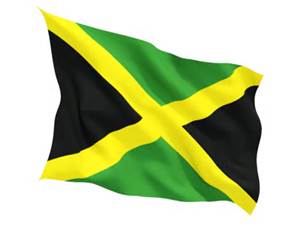Economic growth in Guyana increased to 3.4% in 2018. This was mainly due to increased construction activity. Sugar output fell as restructuring of the industry continued, while there was mixed performance in the extractive industries.
Fiscal performance was boosted by a tax amnesty, which increased revenues and helped stabilise the overall deficit.
Public debt as a percentage of gross domestic product (GDP) increased.
Preparation for oil production continues.
Commercial production is due to commence in 2020. This will increase economic growth and provide windfall revenues for the Government of the Co-operative Republic of Guyana (GOGY).
The proposed Natural Resources Fund (NRF) is supposed to help manage the risks associated with this new development, including minimising negative impacts on other non-oil industries.
Reforms to the doing business environment are also necessary to ensure that non-oil industries can become more competitive.
Other risks include political uncertainty.
KEY DEVELOPMENTS IN 2018
Economic growth is estimated to have risen in 2018. Based on Ministry of Finance data, GDP grew by 3.4%, compared with 2.2% in 2017 (see Chart 1). This partly reflected preparation for the first commercial oil production in 2020.
Construction activity rose by 12%. Output from other services was up 15%, linked to increased visitor arrivals.
Of the traditional main industries, sugar output fell by nearly 30%. Restructuring of the Guyana Sugar Company (GuySuCo) was financed by a 5-year external bond issue for $30 billion (3.7% of GDP). This restructuring includes reducing the workforce and divesting assets, in order to reduce subsidies.
The mining industries had mixed fortunes. Gold extraction declined, mainly due to falling declarations by small and medium-scale miners. However, bauxite production was up, and declarations of diamonds, sand and stone increased.
Following consultation, a NRF bill was laid before the National Assembly in November 2018. The purpose of the NRF is to help GOGY manage the significant revenues from oil production, to improve the lives of all Guyanese. A consultation paper set out proposals for how the fund should be administered, including which institutions would be responsible, as well as proposing reporting requirements.
According to the Ministry of Finance, the NRF would follow generally accepted best practices.
Inflation averaged 1.4% in 2018, compared with 1.6% in 2017. The decrease reflected
lower price rises for food and for housing.
Inflationary pressures are expected to increase in the next two years, as the country readies itself for oil production.
Unemployment was much higher for women than for men. Data published by the Guyana Bureau of Statistics (GBS) in 2017 in its Labour Force Survey (LFS) showed that overall unemployment was 12.0%, and that unemployment was higher for women (15.3%) than for men (9.9%).
For young people (aged 15 – 24), female unemployment was 28.0% and male unemployment was 17.3%. The LFS also reported gender disparities in earnings, noting that this was partly due to men working longer hours.
A tax amnesty boosted revenue collection, allowing the fiscal deficit to stabilise. Between January and September 2018, interest and penalties on outstanding tax liabilities were waived. This resulted in extra collections worth about 1.0% of GDP. Total revenue collected was 11.0% more than in 2017.
Total expenditure was 8.7% higher, mainly due to an increase in transfers. Capital expenditure was up 0.7%, although slightly below budget. Performance in public enterprises deteriorated, and their combined
deficit grew. Sugar production at GuySuCo fell, and Guyana Power and Light and Guyana Oil Company both faced higher fuel costs.
The debt stock rose, as did servicing costs.
However, with the economy growing, the ratio of debt to GDP fell to 44.5% in 2018. In addition, Government overdraft was about 6% of GDP (see Chart 3). External debt service increased because of higher principal payments to bilateral and multilateral lenders, rising interest rates, and exchange rate depreciation. The fall in domestic debt reflected a lower stock of treasury bills.
Net credit from the banking system increased.
Meanwhile, further measures were taken to strengthen the financial sector. Net domestic credit grew by 13.6% in the first 10 months of 2018, reflecting higher loans to both Central Government and the private sector.
Commercial loans were up for agriculture, manufacturing and construction but down for mining. The ratio of gross non-˗performing loans to total loans was 12.8% at the end of June, 22 basis points less than in June 2017.
Bank capitalisation continued to be satisfactory, with the Capital Adequacy Ratio improving from 29.2% to 30.6% in the year to June. To help strengthen financial sector resilience, four bills were submitted to
Parliament in April. In addition, the Bank of Guyana (BOG) established a Financial Stability Unit to monitor and identify risks.
The pressure on Correspondent Banking Relationships continued to ease, although charges for some cross-border transactions increased and some of the banks received limited services.
Gross international reserves fell to just above three months of imports (see Chart 4). The
overall deficit tripled to 4.9% of GDP. The current account deficit worsened as export earnings fell and imports rose, especially fuel.
The services deficit also deteriorated. The financial account surplus strengthened, thanks to higher foreign direct investment and loan disbursements. The balance of payments deficit was funded by debt relief and debt forgiveness worth US$76.6 million, as well as the drawdown on international reserves.
OUTLOOK
Guyana is on the verge of a sharp increase in economic growth but immediate prospects partly depend on ending political uncertainty.
In the November 2018 budget speech, the Ministry of Finance (MOF) was targeting 4.6% GDP growth in 2019, with all major sectors contributing. However, increased political uncertainty in early 2019 may dampen this momentum. The National Industrial and Commercial Investments Limited bond issue will push total public and publicly guaranteed debt above 60% of GDP in 2019 but that ratio is projected to decline sharply after 2020.
Note: $ refers to Guyanese Dollars (G$). US$ refers to United States Dollars. US$1 = G$208.5.
Source: Regional Economic Summary 2018 Caribbean Development Bank


 Businessuite Markets1 week ago
Businessuite Markets1 week ago
 Businessuite News242 weeks ago
Businessuite News242 weeks ago
 Businessuite Markets2 weeks ago
Businessuite Markets2 weeks ago
 Logistics & Transportation1 week ago
Logistics & Transportation1 week ago
 Businessuite Markets2 weeks ago
Businessuite Markets2 weeks ago
 Businessuite Markets2 weeks ago
Businessuite Markets2 weeks ago
 Businessuite News24 International3 weeks ago
Businessuite News24 International3 weeks ago
 Businessuite News242 weeks ago
Businessuite News242 weeks ago















